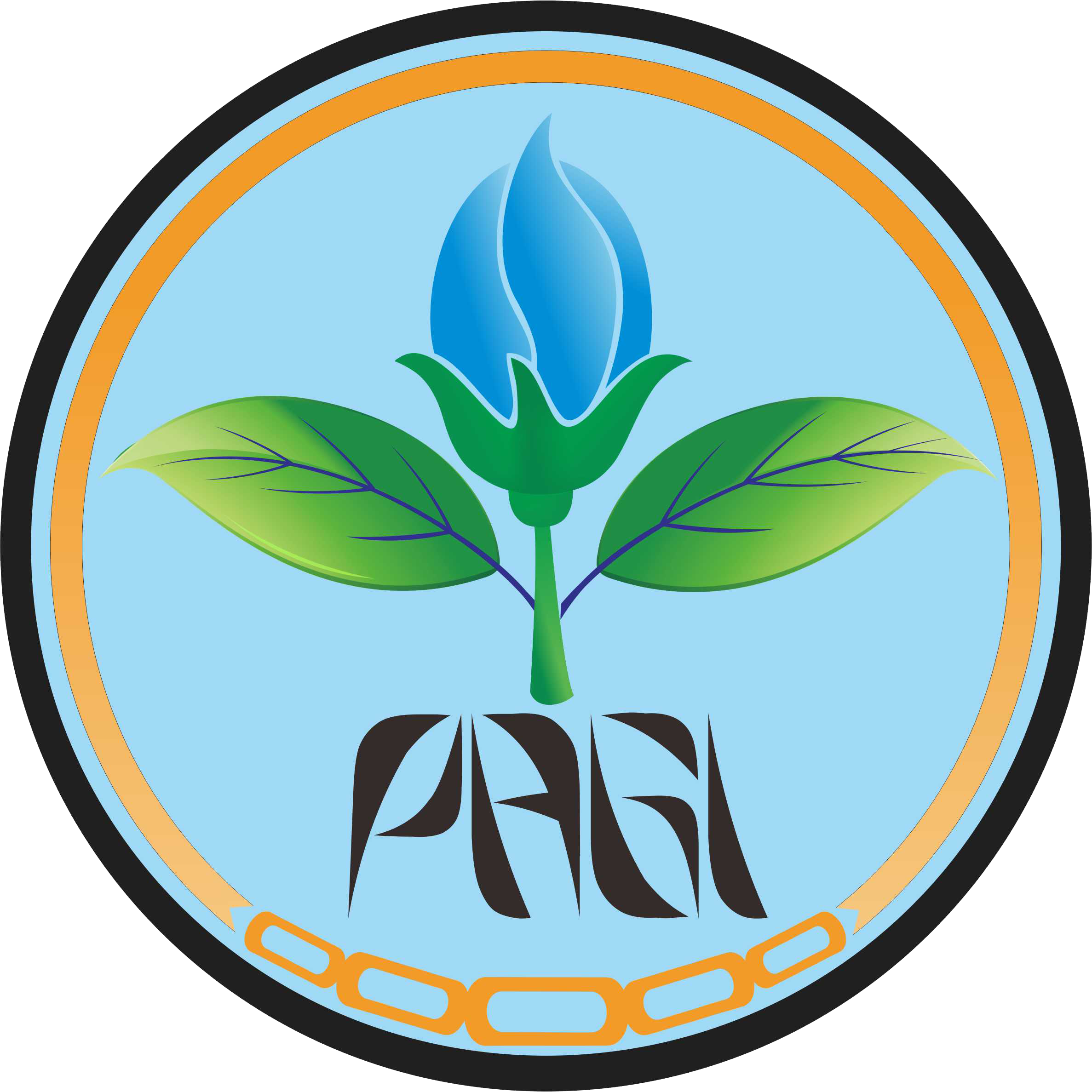Produksi Empat Varietas Padi Sawah yang Diberi Kombinasi Pupuk Bio-Slurry dan NPK
Abstract
Non-organic agriculture has succeeded in increasing the production of lowland rice, but on the other hand also has a negative impact on the ecosystem of agriculture and the environment, such as the decreasing content of soil organic matter. One effort that can be done, is by adding bio-slurry organic fertilizer to the NPK fertilizer. This study was conducted to determine the effect of the combination of bio-slurry fertilizer and NPK fertilizer on the production of four rice paddy varieties. This research by experiment was conducted in Screen House Agrotechnopark, Faculty of Animal Husbandry and Agriculture, Diponegoro University, Tembalang Semarang campus, taking place from October 2018 to January 2019. The experiment used a randomized completely block design with two factors and three replications. The first factor was a combination of bio-slurry + NPK fertilizer ie without N (P0) fertilizer, NPK 550 kg ha-1 fertilizer (P1), bio-slurry fertilizer 3 tons ha-1 + NPK fertilizer 400 kg ha-1 , 6 tons ha-1 bio-slurry fertilizer + 250 kg ha-1 NPK fertilizer, 9 tons ha-1 bio-slurry fertilizer + 100 kg ha-1 NPK fertilizer and 12 tons bio-slurry fertilizer ha-1. Whereas the second factor was the lowland rice varieties namely Inpari 23, Sultan Unsrat, Sintanur and Gilirang. The results of the variance analysis showed that the combination of bio-slurry + NPK fertilizer and lowland rice varieties had a very significant effect on grain yield per clump, number of filled grains, number of empty grains, total grain count, weight of 1000 grains, rice yield per pot and harvest index. The highest grain yield per clump (85.33 g) was obtained from the treatment of 550 kg ha-1 NPK fertilizer, while the highest grain yield per clump (58.06 g) was obtained from the Gilirang variety (V4), the highest total grain amount (174.58 grains) was obtained from the treatment of NPK 550 kg ha-1 and (212.28 grains) fertilizer produced by varieties Inpari 23. The highest yield per pot of rice (61.83 g) was obtained from the treatment of 550 kg ha-1 NPK fertilizer , while the highest paddy rice varieties which produced rice per pot of (63.22 g) were Inpari 23.
Keywords
Full Text:
PDF(ID)References
Ai NS, Banyo Y. 2011. Konsentrasi klorofil daun sebagai indikator kekurangan air pada tanaman. J. Ilmiah Sains. 11:166-173.
Booromand N, Grough MSH. 2012. Macroelements nutrition (NPK) of medicinal plants. J.Med. Plants Res. 6:2249-2255.
Balai Besar Penelitian Tanaman Padi Badan Penelitian dan Pengembangan Pertanian. Departemen Pertanian 2009. http://id.wikipedia.org/wiki/Padi. (10 september 2009).
Dewanto FG, Londok JJMR, Tuturoo RAV, Kaunang WB. 2013. Produksi Tanaman Jagung sebagai Isu Sumber Pakan”. JURNAL : Fakultas Peternakan Universitas Sam Ratulangi Manado, 95115. Jurnal Zootek (“Zootek”Journal), Vol.32,No. 5 2013.
Dong GC, Wang YL, Juan Z, Biao Z, Zhang CS, Zhang YF, Yang LX, Huang JY. 2009. Characteristics of nitrogen distribution and translocation in conventional indica rice varieties with different nitrogen use efficiency for grain output. Acta Agron. Sin. 35:149-155.
Fairhurst T, Witt C, Buresh R, Doberman A. 2007. Padi: Panduan Praktis Pengelolaan Hara. Diterjemahkan oleh A. Widjono. IRRI.
Gardner FP, Pearce RB, Mitchel R. 1991. Fisiologi Tanaman Budidaya. Universitas Indonesia.
Hartatik W, Widowati LR. 1990. Pengaruh Pupuk Majemuk NPKS dan NPK terhadap Pertumbuhan dan Hasil Padi Sawah pada Inceptisol. Penelitian Pertanian Tanaman Pangan. Vol. 34 No. 3. 2015.
Hatta M, Rosmayati. 2015. Profil karakter tanaman padi populasi BULK generasi F4 pada kondisi kahat hara NPK. J. Floratek. 1(10):10-17.
International Training Workshop.2010. Training Material of Biogas Technology. Yunan Normal University. Yunan, China. P102.
Kasniari DN, Supadma AN. 2007. Pengaruh Pemberian Beberapa Dosis Pupuk (N. P. K) dan jenis pupuk Alternatif terhadap Hasil Tanaman Padi (Oriza sativa. L) dan Kadar N. P. K inceptisol selemadeg. tabanan. Jurnal Agritop. (4): 168-176.
Kaya E. 2013. Pengaruh Kompos Jerami Dan Pupuk Npk Terhadap N-Tersedia Tanah, Serapan-N, Pertumbuhan, Dan Hasil Padi Sawah (Oryza Sativa L). Jurnal Agrologia. (2): 43 – 50.
Leomo S, Sutariati GAK, Agustina. 2012. Uji kombinasi pupuk organik dan anorganik dalam pola leisa terhadap pertumbuhan dan hasil tanaman sorgum lokal pada lahan marginal. J. Agroteknos. 2 (3) : 166-174.
Marzuki AR, Kartohardjono A, dan Siregar H. 1997. Potensi hasil beberapa galur padi resisten wereng batang coklat. Prosiding Simposium Nasional dan Kongres III PERIPI, Bandung 24-25 September 1997.
Mohanan KV, Mini CB. 2008. Relative contribution of rice tillers of different status towards yield. Int. J. Plant. Breed. Genet. 2:9−12.
Novira F, Husnayetti, Yoseva S. 2015. Pemberian pupuk limbah cair biogas dan urea, tsp, kcl terhadap pertumbuhan dan produksi tanaman jagung manis (Zea mayssacsharata Sturt.). JOM Faperta 2 (1) : 1-15.
Parman S. 2007. Pengaruh Pemberian Pupuk Organik Cair terhadap Pertumbuhan dan Produksi Kentang (Solanum tuberosum L.). Buletin Anatomi dan Fisiologi XV (2):l 21-31.
Padmanabha IG, Arthagama IDM, Dibia IN. 2014. Pengaruh dosis Pupuk Organik dan Anorganik Terhadap Hasil Padi (Oryza sativa L.) dan Sifat Kimia Tanah pada Inceptisol Kerambitan Tabanan. E- journal Agroekoteknologi Tropika. 3(1):41-50.
Rauf AW, Syamsudin T, Sihombing SR. 2000. Peranan Pupuk NPK pada Tanaman Padi. Jurnal. Balai Besar Penelitian Tanaman Padi.
Santoso AB. 2015. Pengaruh luas lahan dan pupuk bersubsidi terhadap produksi padi nasional. J Ilmu Pertanian Indonesia. 20(3):208-212.
Simanungkalit RDM, Suriadikarta. 2006. Pupuk Organik dan Pupuk Hayati. Badan Penelitian dan Pengembangan Pertanian. Departemen Pertanian, Bogor.
Siregar AZ. 2007. Hama-Hama Tanaman Padi. Fakultas Pertanian. Universitas Sumatra Utara.
Sitompul SM, Guritno B. 1995. Analisis Pertumbuhan Tanaman. Gadjah Mada University Press, Yogyakarta.
Suharno, Mawardi I, Setiabudi, Lunga N, Tjitrosemito S. 2007. Efisiensi penggunaan nitrogen pada tipe vegetasi yang berbeda di stasiun penelitian Taman Nasional Gunung Halimun Jawa Barat. Biodiversitas 8:287-294.
Totong S, Sugiyanta, Melati M. 2015. Peran Pupuk Organik dalam Peningkatan Efisiensi Pupuk. J. Agron. Indonesia 43 (1) : 8 - 14 (2015).
Zhang JH, Liu JL, Zhang JB, Zhao FT, Cheng YN, Wang WP. 2010. Effects of nitrogen aplication rates on translocation of dry matter and nitrogen utilization in rice and wheat. Acta Agron. Sin. 36:1736-1742.
Refbacks
- There are currently no refbacks.






